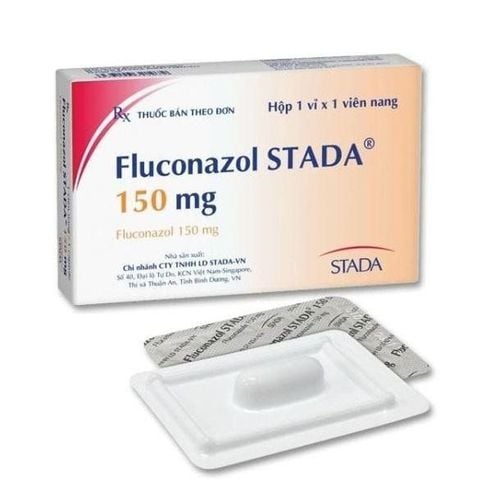This is an automatically translated article.
Erysac is indicated in the treatment of vaginitis caused by common pyogenic bacteria. The drug is prepared in the form of a suppository, so before using it, patients should carefully read the information and consult a specialist.
1. Uses and indications of Erysac
Erysac drug currently has the main ingredients including:
Metronidazole 500mg Neomycin sulphate 65000IU Nystatin 1000 In addition, there are other excipients just enough as indicated by the manufacturer.
With the above ingredients and active ingredients, Erysac is indicated for the following subjects:
People with vaginitis caused by common pyogenic bacteria Trichomonas & Gardnerella vaginalis Treatment of fungal vaginitis Candida albicans Vaginitis due to simultaneous infection with Trichomonas and yeast Indicated in vaginitis due to combined agents.... Besides the indicated subjects, Erysac is also contraindicated for the following subjects:
Contraindicated for people with hypersensitivity to the components of the drug. It is strictly forbidden to use for women who are pregnant in the first 3 months or are in their menstrual period. Patients with bleeding disorders or epilepsy should not use Erysac. Because Erysac is a drug in the group of drugs that treat parasites, antivirals, antifungals, and anti-infectives, it should only be used under a doctor's prescription. Avoiding buying and using it will potentially pose many risks to the patient's health.
2. Dosage of Erysac in treatment
Before using Erysac vaginal suppositories, the patient needs to clean the private area and wipe it with a dry towel. Next, soak the Erysac tablet in warm water for 2-3 seconds, then place it deep into the intimate area. In addition, in some cases of vaginitis, it is possible to combine the application of Erysac and oral drugs to increase the effectiveness of treatment.
The time to take the medicine should be in the evening, because this is when the body is resting and restricting movement, so it will be easier and more effective to order the medicine.
Single dose for patients is 2 grams, combined treatment for 10 days. With 500mg per day. In the process of taking the drug, users should pay attention to use the drug according to the dose prescribed by the doctor. Do not increase or decrease the dose on your own.
Erysac is currently recommended for 10 consecutive days for treatment.
3. Possible side effects when taking Erysac
According to evaluation, Erysac is quite safe during use, however, some users may experience mild reactions such as:
Rash, urticaria, uncomfortable itching. Headache, dizziness, lightheadedness. Decreased white blood cell count, pancreatitis. The identified rate of experiencing side effects with Erysac is usually not much, most often in people with sensitive terrain or drug abuse. To be safe, you should actively share with your doctor about these common reactions for advice on how to handle them appropriately.
Besides, in order to minimize possible side effects, patients should note:
Use prescription drugs During treatment with Erysac, pay attention to clean and dry the intimate area. dry. The drug should be stored in a cool place, away from sunlight and moisture, because this can affect the drug structure. After a period of treatment with Erysac, the patient should be re-examined to see the progress of the disease so that the doctor can make appropriate indications. Do not increase or decrease the dose arbitrarily unless recommended. If you forget to take your medicine, take it as soon as you remember it, because Erysac does not have a strict time limit for taking it. However, it is still best to take the medicine at the same time of day for optimal results. When placing the medicine, the vagina may produce a little white residue of the medicine, this is completely normal, so there is no need to worry. Above is all important information about Erysac gynecological suppositories, patients should carefully consult and use prescription drugs before using to get the best treatment effect.













